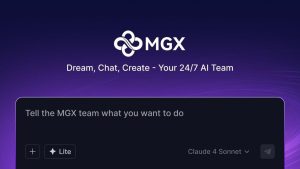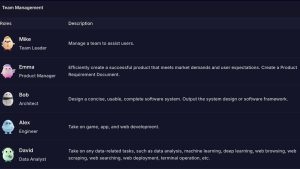When you see the aftermath of an accident on the highway, your first thought is for the well-being of those involved. Any vehicle collision is a serious and traumatic event. However, when one of those vehicles is a massive commercial truck, the entire nature of the incident changes.
A crash involving a semi-truck is not just a larger version of a typical car accident; it’s a fundamentally different event with far more complex legal, medical, and financial implications.
Understanding these differences is the first step toward protecting your rights if you ever find yourself in this unfortunate situation. Read on to learn why these cases are in a category all their own.
The Sheer Scale of Damage and Injuries
The most immediate and devastating difference comes down to simple physics. A fully loaded commercial truck can legally weigh up to 80,000 pounds, while the average passenger car weighs around 4,000 pounds. When these two forces collide, the occupants of the smaller, lighter vehicle absorb a massively disproportionate amount of the impact. This immense disparity in size and weight means that injuries sustained by people in passenger cars are often catastrophic.
While a fender-bender between two sedans might result in whiplash or bruises, a collision with a large truck is far more likely to cause life-altering or fatal injuries. These can include traumatic brain injuries, spinal cord damage leading to paralysis, severe burns, amputations, and extensive internal organ damage. The severity of these injuries means that the medical treatment is more extensive, the recovery time is longer, and the long-term financial and emotional costs are exponentially higher. The stakes are simply in another league due to the sheer destructive force of a commercial vehicle.
Navigating a Web of Complex Regulations
Driving a car requires you to follow standard traffic laws. Driving a commercial truck involves adhering to a dense and complex set of rules mandated by both federal and state governments. The Federal Motor Carrier Safety Administration (FMCSA) sets strict standards for the entire trucking industry, and a violation of these regulations can be a direct cause of an accident. An investigation into a truck crash goes far beyond looking at who had the right-of-way.
These regulations cover a wide range of operational areas, including:
- Hours-of-Service (HOS): Rules that dictate how long a driver can be on the road without taking a mandatory rest break to prevent driver fatigue.
- Maintenance and Inspections: Requirements for regular, documented inspections and repairs to ensure critical parts like brakes, tires, and lights are in safe working order.
- Hiring and Training: Standards for trucking companies to ensure they hire qualified, properly licensed drivers with safe driving records.
- Cargo Securement: Strict rules on how cargo must be loaded, balanced, and secured. A shifted or spilled load can easily cause a driver to lose control.
“The federal trucking regulations aren’t just red tape; they are lines drawn in the sand between a safe journey and a potential disaster,” according to BHL Accident & Injury Lawyers at Belal Hamideh Law. “Proving a violation of one of these specific rules is often the key to proving negligence.”
Identifying Who Is Actually Liable
In a crash between two passenger cars, liability is usually straightforward—it rests with one of the drivers. In a truck accident, the question of “who is at fault?” becomes much more complicated. The driver may have made a mistake, but they are often just one piece of a much larger puzzle. Multiple parties could share the blame, and a thorough investigation is required to identify all of them.
Potential liable parties in a truck accident case can include:
- The Truck Driver: For direct errors like speeding, distracted driving, or driving under the influence.
- The Trucking Company: For negligent practices such as encouraging drivers to violate HOS rules, failing to maintain their fleet, or not providing adequate training.
- The Truck Manufacturer: If the accident was caused by a defective part, such as brake failure or a tire blowout.
- The Cargo Shipper or Loader: If the cargo was improperly loaded, unbalanced, or not secured, causing the truck to become unstable.
- A Third-Party Maintenance Company: If they performed faulty repairs on the truck.
According to Conybeare Injury and Accident Lawyers at Conybeare Law Office , “In a truck accident case, you’re not just looking at the driver; you’re investigating a whole chain of commercial entities. The responsible party might be a corporation hundreds of miles away, and identifying every liable party is crucial for a fair recovery.”
The Evidence Is Different and Disappears Quickly
The evidence needed to prove fault in a truck accident case is unique and highly time-sensitive. Commercial trucks are equipped with sophisticated data recorders, often called “black boxes” or Electronic Logging Devices (ELDs), that capture a wealth of information about the truck’s operation just before, during, and after a crash. This includes data on speed, braking, engine RPMs, and the driver’s hours of service. This data can be crucial in proving what really happened.
Other critical pieces of evidence include the driver’s logbooks, dispatch records, maintenance and inspection reports, and the driver’s post-accident drug and alcohol test results. The problem is that trucking companies are not required to keep this evidence indefinitely.
According to Rogers Car Accident Lawyers at Horton, “The first 48 hours after a truck crash are a race. The trucking company’s response team is on the scene immediately. Victims need someone on their side just as quickly to ensure critical evidence like black box data and driver logs are preserved before they can be legally destroyed.” An attorney will often send a “spoliation letter” immediately to formally demand that all relevant evidence be preserved.
Facing Off Against Powerful Corporate Opponents
When you are in an accident with another driver, you typically deal with their personal auto insurance company. When you are hit by a commercial truck, you are up against a large corporation and its commercial insurance provider. These companies have deep pockets and a team of investigators, adjusters, and lawyers who are trained to manage high-stakes claims.
These corporate teams—often called “rapid response teams”—are frequently dispatched to the scene of a major accident within hours. Their primary goal is to protect their company’s financial interests. They work to control the investigation, interview witnesses, and gather evidence that minimizes their liability.
Robert Cottle, one of the Las Vegas Truck Accident Lawyers at The Cottle Firm, notes, “The goal of a rapid response team is to get to the driver, the truck, and any witnesses before the victim’s side does. They are there to manage the company’s financial exposure, not to ensure the victim is treated fairly.” This creates an immediate and significant imbalance of power that the average person is not equipped to handle alone.
Conclusion
While every motor vehicle accident is serious, it’s clear that a collision with a commercial truck operates on a different level of complexity. The catastrophic potential for injury, the web of federal regulations, the multiple layers of liability, the time-sensitive evidence, and the powerful corporate interests involved all set these cases apart. Recognizing these key differences is essential for anyone who has been involved in such a life-changing event and is seeking the fair compensation needed to begin rebuilding their life.




